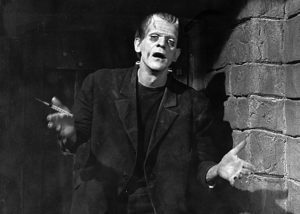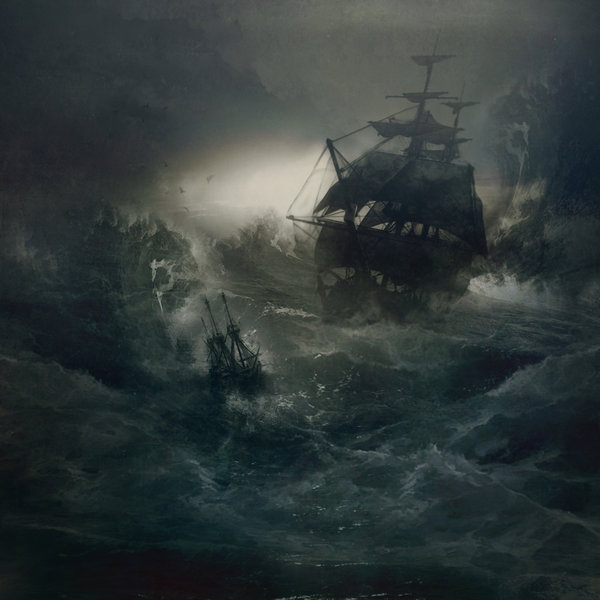Excerpt from Murray Ellison’s 2015 VCU M.A.Thesis on Poe and 19th-Century Science ©
“The captain’s gray hairs are records of the past, and his grayer eyes are Sybils of the future. The cabin floor was thickly strewn with strange, iron clasped folios, moldering instruments of science and obsolete long-forgotten charts”
– “MS. Found in a Bottle” by Edgar Allan Poe (1833)
Several researchers have proposed that late eighteenth and early nineteenth-century Gothic writers (a sub-genre of the “Romantic” writers) inform Poe’s views of the horrors and uncertainties of science (Gewirtz, Tresch, Willis). German and English writers were among the first who attempted to examine the ways that new technologies impacted society. Although they were well-schooled in Enlightenment Age science, they also were notable for introducing elements of uncertainty and chilling reactions to nineteenth-century readers. The “Enlightenment’s assumption that truth is the product of an unmediated encounter between the eye and its subject got sidelined when the novel acquired atmosphere, mood-creating tone and texts” (47). The Gothic writers blurred lines between reality and illusion. They illustrated that the most compelling tales may be derived with believable scenarios from ordinary life, that then spin out of control into fantastic imaginative tales.
The earliest examples of these influential German Gothic writers are Frederich Schiller and E.T.A. Hoffman, whose works were translated from German into English, and the British writer, Mary Shelley. The 1795 English translation of Frederich von Schiller’s “The Ghost-Seer” inaugurated British reader’s interest for German tales of terror. Readers of these types of narratives are never quite certain how to distinguish what is real from what is illusion. Martin Willis writes that Hoffman is important because his stories generated “heated debates on the relationship between the new empirical science and the older methods of natural philosophy” (28). Perhaps Hoffman’s most notable work is “The Nutcracker and the Mouse” (1816) because it confounds the lines between illusion and reality without explaining to his readers when those lines are crossed. Hoffman’s “The Sandman” offers connections between science, magic, and mesmerism.” Willis argues, “Hoffman’s balancing of these previously considered distinct categories “reflect the difficulty in categorizing scientific knowledge in the nineteenth century” (29). Gothic writers made significant contributions to our present-day understanding of how the public learned about science in the early nineteenth century. They also defined the relationships between magic and science, and between illusion and reality. Martin Willis asserts that Mary Shelley’s Frankenstein, published in France in 1824 is important because it is a “condemnation of the overreaching scientist.” He describes it as a “cautionary tale of scientific hubris,” and argues that the novel “critiques the role of science in the early nineteenth century” (63). It is also important because it is one of the first important Gothic book widely published in English, and thus accessible to Poe when he started writing fiction in the 1830s.

The Gothic writers also were important because they incorporated the public’s uncertain reactions against the dehumanizing effects of the expansion of nineteenth-century industrialization and the rise of the power of machines and mechanistic processes. Poe and the “Romantic” period writers felt this mechanistic view detracted from natural human tendencies, such as emotion, reason, and creativity. These writers criticized rational and empirical scientists as being detached from emotion and artistic creativity. They also blurred the boundaries between scientific disciplines; and between science and pseudo-science. Poe was inspired by several of their approaches and established Gothic tones of uncertainty and terror in several of his science fiction narratives. He also extended Gothic themes and created new forms of fiction that he based on his reactions to the themes of Industrial Age science. The next series of columns will explore Poe’s Gothic and other styles of fiction which expressed his interest and views of nineteenth-century science.
Selected Sources
Gewirtz, Isaac. Edgar Allan Poe: Terror of the Soul, Ed. New York: New York Public Library, 2013.
Tresch, John. “The Potent Magic of Verisimilitude: Edgar Allan Poe and the Mechanical Age.” The British Journal of Science 3.3 (1997): 275-90. Web. 15 Mar. 2014
Willis, Martin. Mesmerists, Monsters, and Machines: Science Fiction and the Cultures of Science in the Nineteenth Century. Kent, OH: Kent State University Press, 2006.
Thomas, Dwight and David Jackson, Ed. The Poe Log- A Documentary Life of Edgar Allan Poe 1809-1849. Boston: G.B. Hall and Company, 1987.

